Occupational Safety Training in Nose Hair Trimmer Manufacturing
99,000 ₫
Note: The above price is calculated for one person, the price may fluctuate depending on the number of trainees participating in the course and depending on market movements. For more accurate pricing support, please refer to the quotation table or contact our consulting staff directly.
Occupational safety is an important issue in nose hair trimmer manufacturing factories and needs to be addressed promptly to ensure the health and safety of workers, and to enhance the reputation of businesses. The Occupational safety training course is one of the effective solutions to raise awareness about accident prevention for workers participating in nose hair trimmer manufacturing.
Table of Contents
Toggle1. Overview of Nose Hair Trimmers
a. What is a Nose Hair Trimmer?
A nose hair trimmer is a compact, portable device designed to remove fine hairs from the nose or ear area. Nose hair trimmers usually feature a rotating cutting head to reach difficult spots in the nose and ears, and they can also be used to trim hair in other areas of the body.
Nose hair trimmers are typically powered by electricity or batteries and can be operated using a push button or switch. Some models come with an LED light to help users see more clearly during use. Nose hair trimmers are a convenient product for individuals who want to maintain a clean and neat appearance, especially men.

b. Types of Machinery for Nose Hair Trimmer Production
The production of nose hair trimmers involves multiple steps, from design and machining to assembly. Some of the machinery used in the production process includes:
- Lathes: used to machine round metal parts, such as cutting heads or other components of the nose hair trimmer.
- Milling machines: used to process complex parts of the nose hair trimmer, such as internal grooves or flat surfaces.
- EDM wire cutting machines: used for precise cutting of metal components, such as cutting heads or gear parts.
- Plastic injection molding machines: used to create plastic parts, such as casings or smaller components of the trimmer.
- CNC machines: used to machine metal or plastic parts with high precision.
- Welding machines: used to weld various components of the nose hair trimmer together.
In addition to these machines, the production process also includes assembly, quality inspection, and packaging.

c. Nose Hair Trimmer Manufacturers in Vietnam
In Vietnam, there are many reputable and trusted brands producing nose hair trimmers. Notable brands include:
- Kemei: One of the leading brands in Vietnam for nose hair trimmers, offering high-quality products with a variety of models suitable for different consumer needs and preferences.
- Philips: A globally recognized brand for home electronics, including nose hair trimmers. Philips products are highly regarded for quality and practical features.
- Panasonic: A Japanese brand producing high-quality home appliances, including nose hair trimmers. Panasonic products are known for their attractive design and diverse functions, providing convenience in personal grooming.
- Braun: A German brand with a range of high-quality products, including nose hair trimmers. Braun products offer sleek design, useful features, and long-lasting durability.
- Xiaomi: A Chinese brand well-known for smart electronic devices, including nose hair trimmers. Xiaomi products feature modern design and practical functions, meeting user demands.
d. Specific Roles in a Nose Hair Trimmer Manufacturing Factory
Group 1
- Executive Director, Deputy Executive Director, Department Heads in a nose hair trimmer manufacturing factory.
Group 2
- Safety Officers: responsible for factory safety management, designing safety procedures, supervising, and ensuring employees comply with safe work practices.
Group 3
- Material selection: Manufacturers select suitable materials such as stainless steel, aluminum, ABS plastic to produce the components of the trimmers.
- Machining: After materials are selected, components are machined to create precise parts that meet quality standards.
- Assembly: Workers assemble the machined parts into a complete product.
- Quality inspection: Assembled products are inspected to ensure they meet standards and are safe for use.
- Packaging and shipping: Finally, products are packaged and delivered to distributors or retail stores.
Group 4
- Office, service, sales, and marketing roles.
- Production management, quality management, human resources, materials management, finance and accounting.
- Product design: The design team creates the product’s shape, dimensions, and functional features.

2. Overview of Occupational Safety Training for Nose Hair Trimmer Production
In this article, we focus on issues related to Group 3, as Group 3 directly participates in production and faces the highest occupational safety risks. Refer to other groups here.
a. What is Group 3 Occupational Safety Training?
- Group 3 Occupational Safety Training consists of sessions that provide workers with awareness and methods to prevent workplace accidents.
- The training helps employees identify and avoid hazards, reducing the risk of accidents during work.
REGISTER FOR OCCUPATIONAL SAFETY TRAINING SERVICE
b. Training Duration
Initial Safety Training Duration
- Total training hours are at least 24 hours, including assessment time.
- 8 hours of theory on safety laws and policies
- 8 hours of basic occupational safety and hygiene knowledge
- 4 hours of specialized training theory
- 2 hours of specialized training practice
- 2 hours of final theoretical assessment
The training center may divide the schedule into multiple sessions depending on worker availability. Typically, there are six sessions over three days, provided the manufacturing company can schedule continuous training.
Periodic Safety Training Duration
- Before the occupational safety card expires, employees must undergo periodic occupational safety training, with periodic training hours being at least 50% of the initial training duration.
Explanation: The total periodic training time is at least 12 hours, including assessment. After completing the training and passing the test, employees will be reissued and their occupational safety card extended.
c. Training Content
| No. | TRAINING CONTENT | TRAINING DURATION (HOURS) | |||
| Total | Breakdown | ||||
| Theory | Practice | Assessment | |||
| I | Safety policies and occupational hygiene laws | 8 | 8 | 0 | 0 |
| 1 | Overview of legal documents related to occupational safety and hygiene. | 6 | 6 | ||
| 2 | Standards and technical regulations on occupational safety and hygiene. | 1 | 1 | ||
| 3 | Specific regulations from state management agencies on occupational safety and hygiene when constructing, expanding, or renovating facilities, and for handling, storing, and inspecting machines, equipment, materials, or substances with strict safety requirements. | 1 | 1 | ||
| II | Basic knowledge on occupational safety and hygiene | 8 | 8 | 0 | 0 |
| 1 | Basic knowledge of hazards in the workplace. | 4 | 4 | ||
| 2 | Methods to improve working conditions. | 1 | 1 | ||
| 3 | Safety culture in production and business. | 1 | 1 | ||
| 4 | Rights and obligations of employers and employees; policies on occupational safety and hygiene; roles of safety and hygiene networks. | 1 | 1 | ||
| 5 | Safety rules, signs, safety equipment usage, personal protective equipment, basic first aid, and occupational disease prevention. | 1 | 1 | ||
| III | Specialized training content | 6 | 4 | 2 | 0 |
| Comprehensive knowledge of machines, equipment, substances that may cause hazards; risk analysis and management; safe working procedures for machines, equipment, and substances with strict safety requirements. | 6 | 4 | 2 | ||
| IV | Final assessment of occupational safety training | 2 | 2 | 0 | 0 |
| Total | 24 | 22 | 2 | ||
See more training content for all 6 groups
d. Occupational Safety Card
Upon completing the occupational safety training and passing the assessment, employees will be issued an occupational safety card (commonly called Group 3 safety certificate).
The Group 3 safety card shows the employee’s name, date of birth, job, and specific working environment. It also records training hours, a red stamp, and the signature confirming course completion.
According to Clause 2, Article 24, Decree 44/2016/ND-CP, issuance is divided into two cases:
- If the employer and employee have an employment contract, the employer must sign, stamp, and validate the safety card after the employee completes training from a recognized training unit and passes the assessment.
- If the employee is freelance or temporary without a contract, the training unit must sign, stamp, and validate the safety card after the employee completes training and passes the assessment.

Group 3 occupational safety card for nose hair trimmer production
3. Identifying Hazards Affecting Workers in Nose Hair Trimmer Production
During nose hair trimmer production, factories need to pay attention to hazards that may affect workers’ health and safety. Key hazards include:
- Machinery hazards: Contact with machines and equipment may cause injuries or workplace accidents. Factories should ensure all equipment is properly maintained, repaired regularly, and equipped with safety measures such as guards, safety locks, and personal protective equipment.
- Chemical hazards: Chemicals used for cleaning, lubrication, or processing parts may harm workers’ health. Factories must use chemicals safely, comply with safety standards, and store them properly.
- Lighting hazards: Strong lighting may cause eye strain and reduce productivity. Factories should provide adequate lighting that meets safety standards.
- Electrical hazards: Improperly maintained electrical equipment may pose a risk of electric shock during production.
- Noise hazards: Machinery can generate harmful noise levels. Factories should ensure equipment is properly maintained, noise levels are stable, and standards for occupational noise safety are met.
4. Common Occupational Accidents for Workers in the Production of Nose Hair Trimmers
Common occupational accidents for workers in the production of nose hair trimmers may include:
- Accidents caused by machinery and equipment: Using machines and equipment during production can cause accidents such as eye injuries, hand cuts, back pain, impact injuries, etc.
- Accidents caused by chemicals: Chemicals used in the production process can cause accidents such as chemical poisoning, dermatitis, rashes, difficulty breathing, etc.
- Accidents caused by lighting: Strong or improper lighting during production can cause accidents such as eye strain, headaches, vision impairment, etc.
- Accidents caused by noise: Noise in the production process can cause accidents such as hearing loss, ear fatigue, headaches, etc.

5. Safety Measures for Participating in the Production of Nose Hair Trimmers
To ensure the safety of workers participating in nose hair trimmer production, the following safety measures should be applied:
- Ensure full personal protective equipment: Employees need to be equipped with full personal protective equipment such as helmets, safety glasses, gloves, masks, safety shoes, etc., to protect their health and lives during production.
- Use machinery and equipment properly: The use of machines and equipment during production must comply with proper procedures and instructions. Workers need to be trained and guided on correct usage of the equipment.
- Regularly inspect and maintain equipment: Machines and equipment in the factory must be inspected and maintained regularly to ensure proper operation and prevent occupational accidents.
- Ensure a clean working environment: Factories need to maintain a clean working environment to minimize negative impacts on workers’ health, such as air pollution, humidity, and lighting.
- Occupational safety training: Employees need to be trained and guided on occupational safety, the proper use of personal protective equipment, and safe working procedures in the factory.
- Ensure chemical safety: Chemicals used in the production process must be used correctly and stored safely.
- Monitor lighting and noise: Factories need to ensure that lighting and noise levels during production meet safety standards and do not harm workers’ health.
- Periodically conduct occupational environment monitoring in factories, collect and analyze harmful factors to workers, and adjust to reduce risks to prevent occupational diseases.
6. Benefits of Occupational Safety Training for Nose Hair Trimmer Production
An Toan Nam Viet provides your business with the following benefits after completing occupational safety training courses in accordance with Decree 44/2016/ND – CP on occupational safety and hygiene for companies and enterprises.
- Workers can recognize potential occupational hazards and take preventive measures to avoid accidents.
- Your business can establish risk prevention measures in production, operation, and maintenance processes.
- Reduce costs associated with safety risks in the workplace.
- Uninterrupted production increases labor productivity and product quality.
- Compliance with labor safety laws, avoiding legal risks.
- Enhances reputation and professionalism, boosting your business brand value.
Nam Viet’s training courses are a solution to prevent and mitigate external hazards, helping individuals avoid injuries or more serious risks, including death.
REGISTER FOR OCCUPATIONAL SAFETY TRAINING SERVICE
7. Customer Feedback After Completing Occupational Safety Training for Nose Hair Trimmer Production
An Toan Nam Viet has years of experience accompanying numerous enterprises in Vietnam, especially in southern provinces. This responsibility is highly valuable, which is why Nam Viet’s Occupational Safety Training is increasingly professional. Our growth is driven by positive feedback and suggestions from enterprises. Below are testimonials from partners we have served.
Bac Nam E&C Investment and Construction Joint Stock Company
“The first time I used the service at An Toan Nam Viet, I was surprised by the 24/7 support from the consulting team. The class organization was quick and convenient for our company. Thank you very much for Nam Viet’s service!”
Hoa Dat Construction and Trading Joint Stock Company
“Nam Viet’s service has helped us greatly in simplifying labor safety and completing safety documentation for our work process. The consulting team responded promptly to our inquiries. 5 stars for Nam Viet.”
See more customer interviews after using our services at An Toan Nam Viet
8. Occupational Safety Training Capacity of An Toan Nam Viet
An Toan Nam Viet is a reputable and high-quality occupational safety training center in Vietnam. Training sessions are conducted continuously at production workshops, factories, or construction sites nationwide (all 63 provinces of Vietnam).
REGISTER FOR OCCUPATIONAL SAFETY TRAINING SERVICE
Occupational Safety Training License
- An Toan Nam Viet has been inspected and certified by the Department of Occupational Safety under the Ministry of Labor, Invalids, and Social Affairs and granted a certificate of eligibility to operate occupational safety and hygiene training. This further strengthens our operational capacity in occupational safety training.

Training Materials and Lectures
- Before being included in occupational safety training courses, training materials are reviewed and verified to ensure accuracy and effectiveness.
- Our instructors’ teaching methods are standardized according to An Toan Nam Viet’s guidelines, based on research and experience in occupational safety and hygiene training, designed to maximize knowledge retention for trainees.
Facilities
- Controlling classroom factors affecting training increases teaching efficiency and knowledge absorption.
- Our training facilities provide spacious classrooms meeting standards for area, lighting, and training equipment.
9. Nationwide Reputable Occupational Safety Training Center
At An Toan Nam Viet, we prioritize professional dedication in occupational safety training. Imparting knowledge to help workers protect themselves ensures their safety while earning a living and contributes to nation-building.
We meticulously prepare every detail, from teaching tools and equipment to manuals, documents, audio, and lighting.
Our occupational safety instructors are experts with many years of field experience, including research on hazard identification across various industries and prevention methods.
Lessons are based on practical experience and delivered vividly for easy understanding. These factors help workers learn comfortably and absorb knowledge effectively, while always aligning with Decree 44/2016/ND-CP.
As a result, workers learn multiple hazard prevention measures and self-protection methods, applying them appropriately in real work situations.
Our training center proudly provides professional, reputable occupational safety training with the following advantages:
- Competitive training fees while ensuring high-quality instruction.
- Flexible training schedules adapted to company production.
- Quick certification procedures compliant with legal regulations.
- Experienced instructors with many years in the profession.
- Classrooms controlled for optimal learning conditions to improve teaching efficiency and knowledge absorption.
- Lessons are tailored to occupational safety in enterprises.
- An Toan Nam Viet works dedicatedly and professionally to provide accurate and prompt customer support.

10. Additional References for Occupational Safety Training in Nose Hair Trimmer Production
- Occupational Safety Materials for Nose Hair Trimmer Production
- Occupational Safety Training Materials Set
- Occupational Safety Training Test Set
- Occupational Safety Training Curriculum for Nose Hair Trimmer Production
- Occupational Safety Quiz for Nose Hair Trimmer Production
1 review for Occupational Safety Training in Nose Hair Trimmer Manufacturing
No comments yet

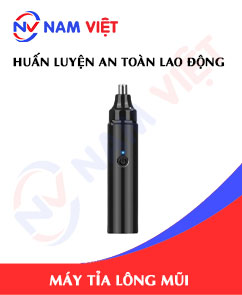
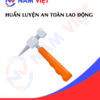
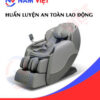






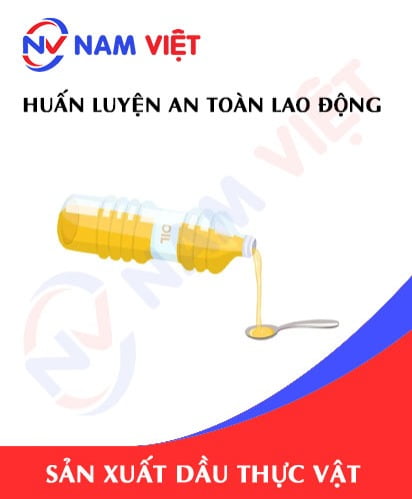


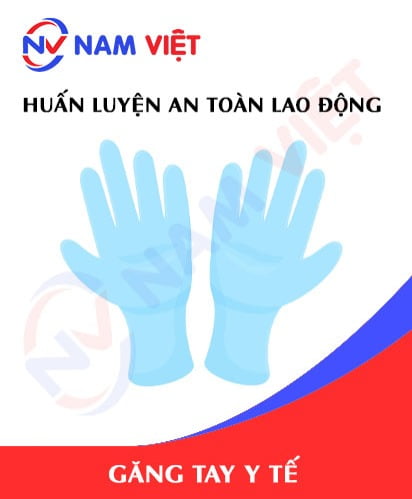

namchinh.haiphong341
Triển khai nhanh gọn và chu đáo, tôi rất hài lòng!